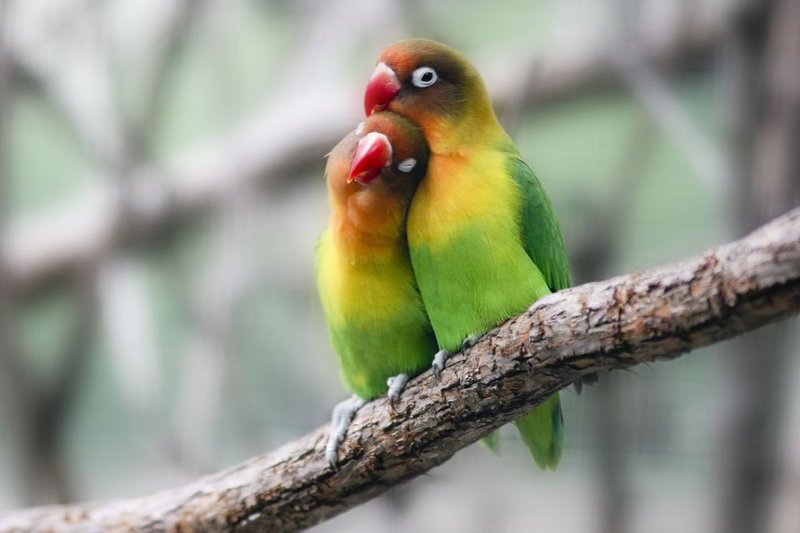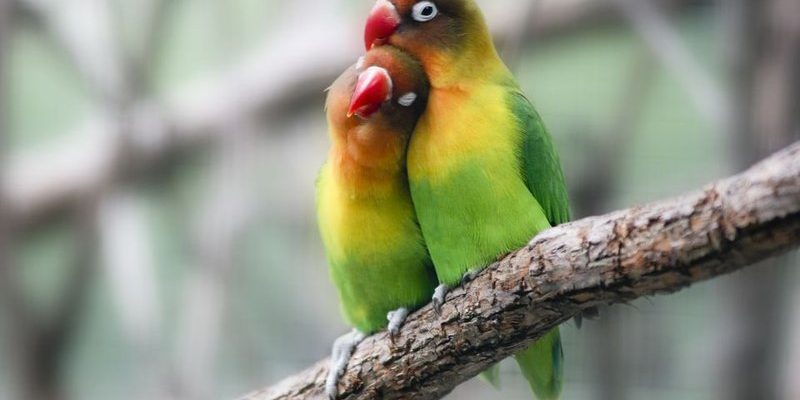
Understanding what these vocalizations mean is like unlocking a secret language that can help you bond with your lovebird and understand its needs. Imagine sitting down with a friend over coffee, sharing an exciting, messy life update—that’s how lovebirds communicate. They don’t just squawk for fun; each sound has a purpose. So grab your favorite drink and let’s dive into the world of lovebird vocalizations!
Types of Lovebird Sounds
Lovebirds make a variety of sounds, each conveying a different emotion or message. Here are some common types of vocalizations you might hear:
- Chirps: These are short, high-pitched sounds often made when lovebirds are happy or excited.
- Coos: A softer, more soothing sound, cooing usually signifies contentment and comfort.
- Whistles: Whistling can indicate playfulness or curiosity. It’s like a lovebird saying, “Hey! Check this out!”
- Screeches: Loud and sharp, screeching usually means your lovebird feels threatened or is seeking attention.
- Chattering: This is a mix of sounds that could mean your lovebird is socializing with you or other birds.
Recognizing these sounds will help you better understand your lovebird’s mood. If you hear a lot of chirping, it’s a good sign that your bird is feeling playful. On the flip side, a sudden screech might indicate that something’s wrong or that it needs your attention.
Why Lovebirds Vocalize
You might be wondering, why do lovebirds vocalize in the first place? Well, they have a few reasons for their chatter. Primarily, vocalizations serve as a way to communicate with one another. Lovebirds are social creatures, and their sounds help them stay connected with their companions—be it other lovebirds or their human caregivers.
Additionally, vocalizations can express feelings. For example, a lovebird might chirp happily while playing or coo softly when it’s relaxed and comfortable. This is crucial information! Understanding the context of their sounds can help you respond appropriately. If your lovebird is screeching, it could mean it’s scared or needs help, allowing you to step in and comfort it.
Understanding Emotional Context
The emotional context behind a vocalization is key. Here’s how to interpret the feelings your feathered friend may express:
- Happy: If your lovebird is chirping and flapping its wings, it’s likely feeling joyful and playful.
- Comfortable: A soft cooing sound often means your lovebird feels safe and secure in its environment.
- Agitated: Rapid screeches or cries may indicate stress or anxiety. It could feel threatened by a noise or a new presence.
- Lonely: If your lovebird starts calling out frequently, it could be seeking companionship, especially if it’s alone.
Getting to know these emotional cues will help you build a deeper connection with your lovebird. Pay attention, and over time, you’ll learn to resonate with its unique brand of communication.
Training Your Lovebird to Vocalize
If you want to encourage your lovebird to vocalize more, training can help! Here are some effective methods to boost your bird’s confidence in chirping and chatting:
1. Positive Reinforcement: Reward your bird with treats or affection whenever it makes a sound, especially if it’s a sound you want to encourage.
2. Modeling Sounds: Lovebirds are great mimics. Try mimicking sounds you want them to learn. Your bird might just pick it up!
3. Play with Interaction: Spend time talking to your lovebird. The more social interaction it has, the more it might feel inclined to vocalize back.
Remember, training takes time and patience. Don’t rush it, and let your lovebird express itself naturally. Celebrating small vocal victories can strengthen your bond, making both of you feel good!
Common Problems with Vocalization
Sometimes, vocalizations can become an issue. Here are a few common problems and how to address them:
- Excessive Screeching: If your lovebird is screeching more than usual, it might be stressed or bored. Make sure it has enough toys and mental stimulation.
- Lack of Vocalization: If your lovebird suddenly goes quiet, it could be a sign of illness or stress. Ensure its environment is calm and assess its physical health.
- Too Much Noise: If your lovebird is overly vocal and disruptive, consider spending more time with it or providing it with a companion.
Identifying these problems early helps ensure a happy, healthy life for your lovebird. Being proactive in addressing these issues will lead to a more harmonious household.
How Vocalizations Help Bonding
Understanding and responding to your lovebird’s vocalizations plays a significant role in strengthening your bond. When you listen attentively and react to their sounds, it shows them that you care, building trust between you and your feathered friend.
You might notice that as you engage with your lovebird’s vocalizations, it starts to vocalize even more. This interplay can create a beautiful rhythm in your relationship. The more you communicate—through sounds, gestures, and attention—the stronger your connection becomes.
It’s like watching a delightful dance unfold, where each partner responds and adjusts to the other’s movements. And honestly, there’s nothing quite as rewarding as seeing your lovebird thrive and express itself!
In the world of lovebirds, vocalizations are a vibrant part of their identity. From chirps of joy to coos of contentment, each sound carries meaning and emotion. By learning to listen to these vocalizations, you can deepen your understanding and bond with your feathered companion.
Take the time to observe and interact with your lovebird. Every chirp and whistle is an opportunity to connect more with your pet. So, the next time you hear your lovebird chatter, lean in and listen. You might just discover a whole new level of communication that enriches both your lives!

